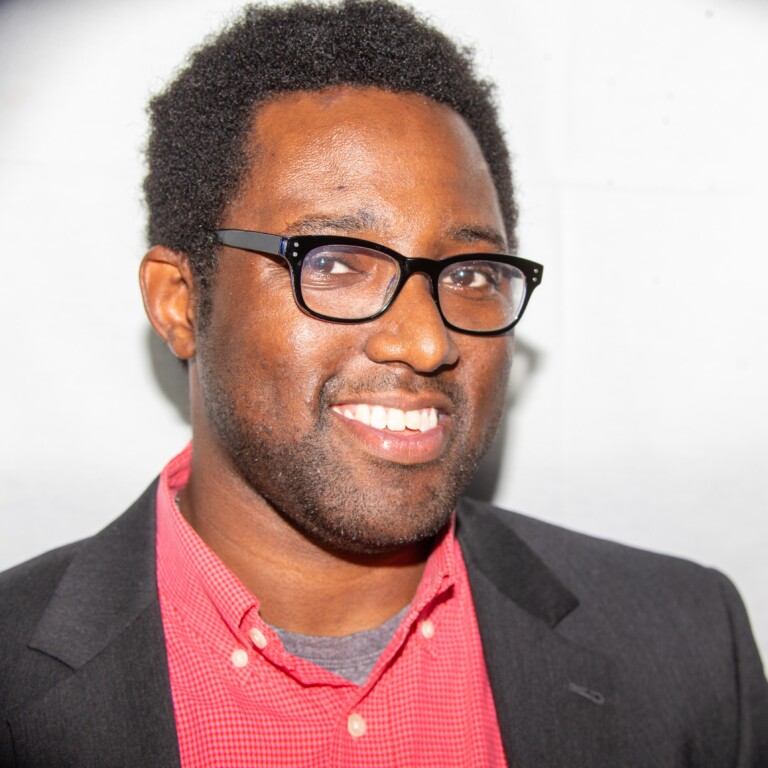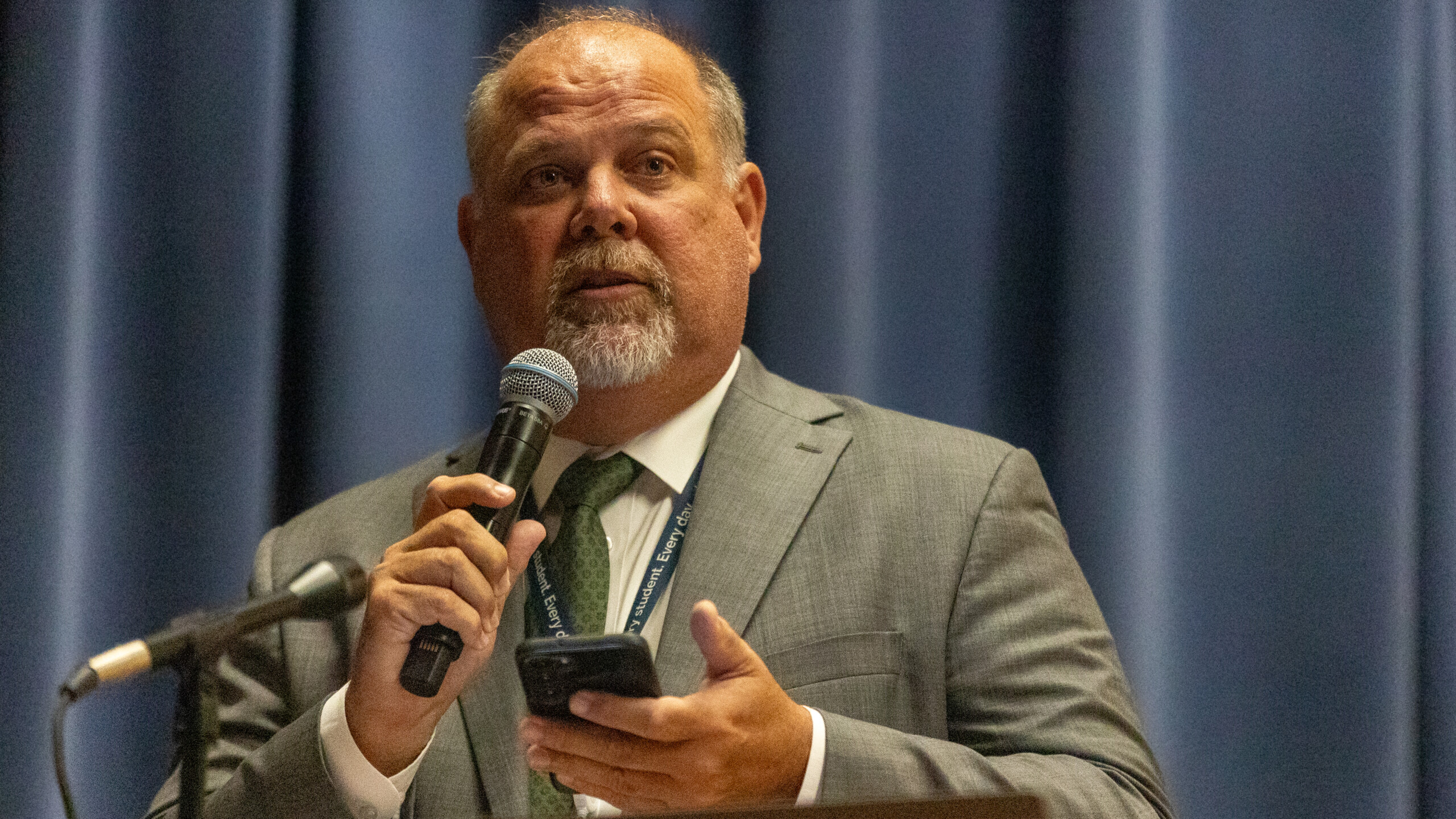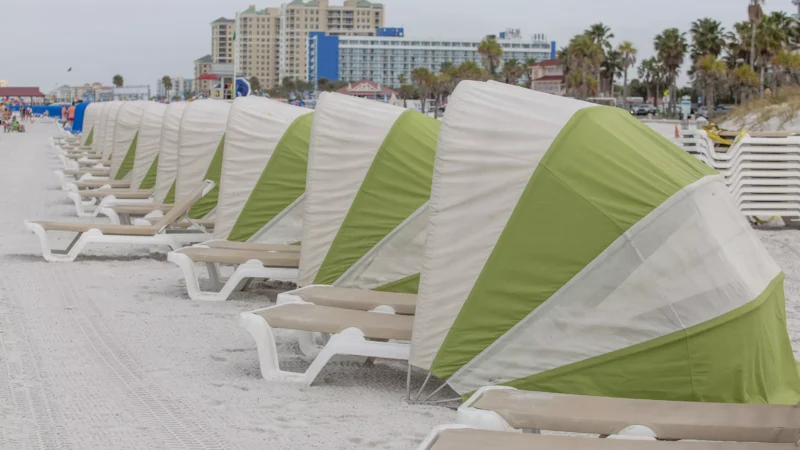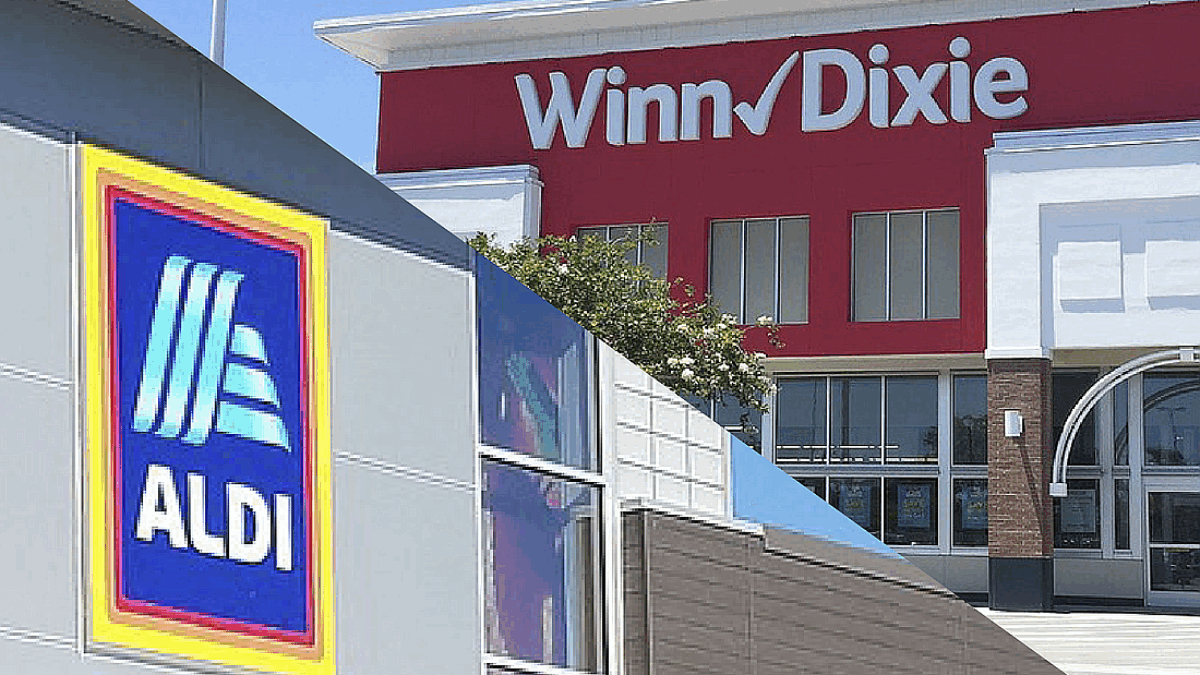Duval County Superintendent Christopher Bernier has worked in education his entire professional life. As he begins his 38th year in the field, Bernier met with Jacksonville Today to outline his goals for the academic year, the district’s financial outlook, local literacy efforts and more.
Duval Schools enters the 2025-26 year euphoric after its academic gains were recognized by the Florida Department of Education in July.
Duval Schools officials did not know with certainty that it was an A-rated district until Gov. DeSantis announced it at Oceanway Elementary last month. They had a hunch. Nevertheless, it was a pleasant surprise.
Getting to the top is one thing. Remaining there, Bernier says, is a separate challenge.
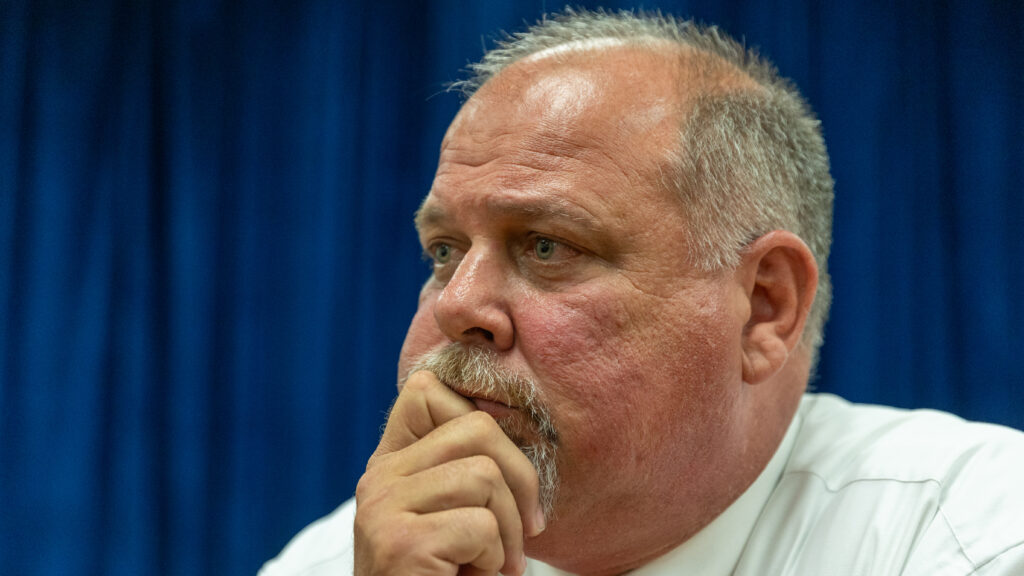
Q: I remember sitting pretty much in the same spot at this time last year and asking you some things. You mentioned that you really wanted to use the first year to “seek to understand” the district. What are some things that you understood in your first year as superintendent that will inform your actions in your second?
A: To use another (phrase from Stephen Covey), begin with the end in mind and seek first to understand. I think we are in a mode of trust. You can’t rush trust. Trust is like a bank account. You make deposits and withdrawals; but you better make sure — and I tried this year — to make as many deposits as I could.
The circumstances I was dealt forced some early withdrawals. Some school closures, some school consolidations, some other things.
The thing I want to focus on is that about three months in people were saying “What are you noticing?” And, I talked about the strength of our people. Education is a people business. I don’t know another business, because I’ve never been associated with one. But, in this world, right people in the right places with great instructional leaders, progress monitoring and collective accountability.
That idea of accountability (is) not being a gotcha, but a chance to have a real conversation about how we make improvements and how we move forward. That’s where this district is headed. It’s not new things. It’s continuing to refine our craft around the things that we shared as vision, shared as values and moving those things forward for the betterment of our children.
Q: Were there things that surprised you (where) you didn’t realize the magnitude of it, or the success of it, or the challenge that it would be in your first year. What would some of those be? How can you take what you learned from those surprises moving forward?
A: I think the biggest surprise that I received — I had an indication of it when I interviewed, but — I was not aware of the depth of the financial health, or illness, that Duval was involved in when I took over.
The fund balance hovering at 4%, nipping at that statutory requirement of 3%, forced my hand with a lot of decisions that, in a first year, a lot of superintendents wouldn’t make. But, I think by going out and listening to learn, and then learning — once you learn, you can start to lead.
(I did not have) enough time to have all of those conversations wrapped up the way that I wanted to. But, the time came to make some difficult decisions, and we had to make them.
We’re happy to report we are in a better place. We still have some work to do. We still have more financial issues we still have to tackle. What I learned was it took awhile to get here, and its going to take awhile to climb out.
(Writer’s note: Florida Statute 1011.051 states districts should have at least 3% of their operating budget in a fund balance, which is essentially a reserve fund. According to data Duval Schools shared with the Florida Department of Education at the end of the 2023-24 academic year, its fund balance was 1.3% of its total $1.23 billion in expenses.)
Q: That leads me to my question about the budget shortfall. I think it was about $100 million at one point. Where is it now? What are some ways that can be shrunk?
A: That’s a difficult question to answer right now. I’m not dodging it. We’re still waiting for the state’s fourth calculation. In order to really determine what the ending fund balance is, we need that fourth (calculation) out of Tallahassee. It’s been held up. We’re getting all sorts of reports that it’s coming, and it’s coming any day now.
Once we have that, we’ll be able to put that into our calculations. We feel like we’ve trimmed about $40 million off that number.
Then there’s operational savings to be realized this year as we’ve had to consolidate and close some schools. We no longer have to pay the bills for those schools.
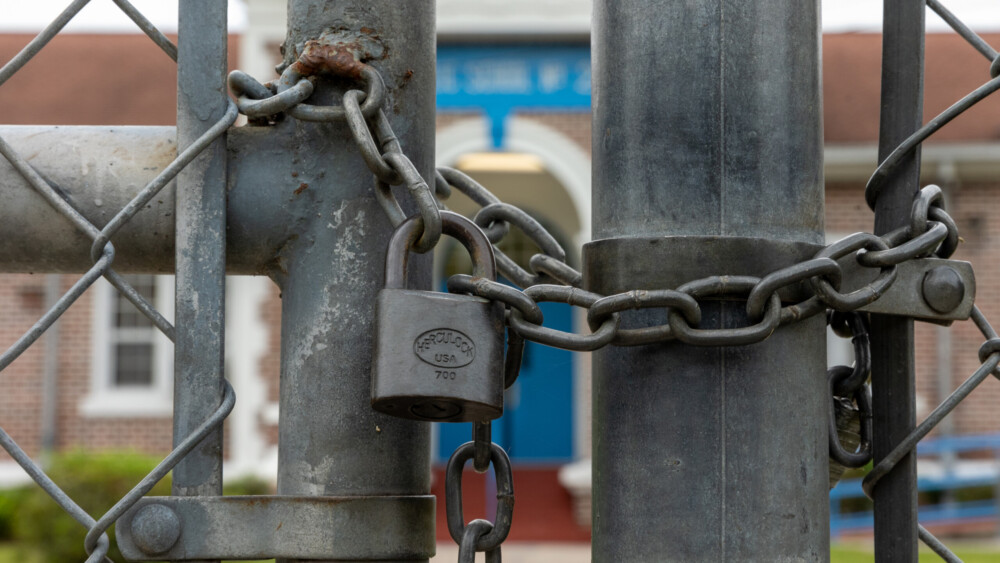
We’re in the process of selling this building, potentially, to make some money, transfer the corporate office and leave us with a delta that’s in the positive.
There are lots of things moving right now — moving to a seven period day, reducing some of the transportation routes. Those types of situations have helped us this past year. Now, we are going to continue to reap the benefit of those decisions, which will continue to take the deficit down to a smaller amount.
In our strategic plan, the board has an expectation — and so do I — that we’ll start to grow our fund balance. The growth of a fund balance puts us in a better place, not only for emergencies, but also a chance to really change the trajectory for some of our employees and their paychecks.
(Writer’s note: The Florida Education Finance Program provides each school district with an understanding of how much money it will receive from the state. It provides four financial calculations, as well as a final calculation. The Florida Department of Education has not yet shared the fourth calculation for the 2024-25 academic year. The delay is due, in part, to the Florida Legislative session extending six weeks past its scheduled conclusion.
For the 2023-24 academic year, the fourth calculation was shared with districts in June 2024. During the 2022-23 academic year, districts had that information in April 2023. In the 2021-22 academic year, districts received that information in May 2022.)
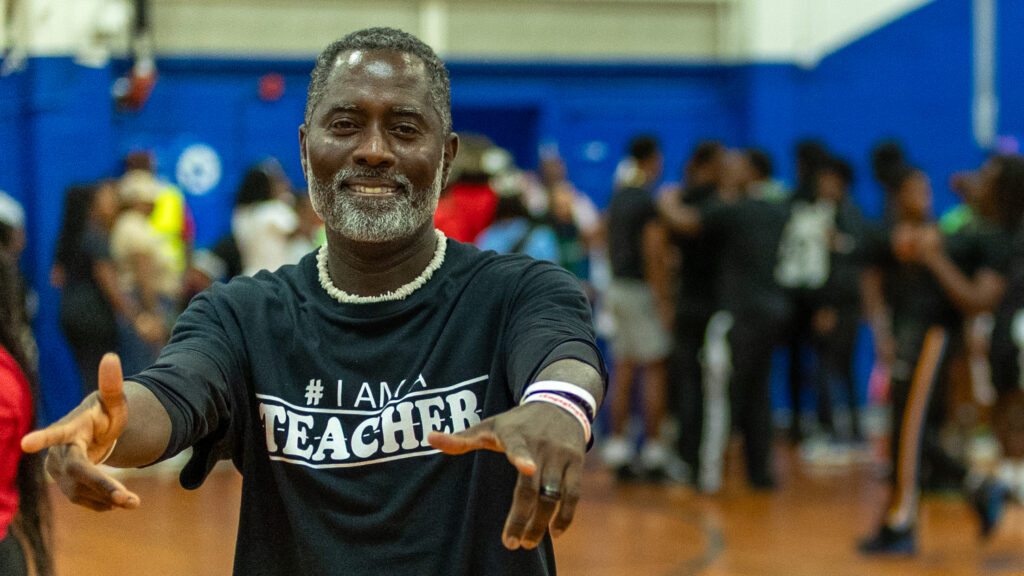
Q: I do remember last year when we spoke about the three-legged stool. One of those was reserves and growing the district’s reserves. Another was teacher investment.
A: We have invested in our teachers. One of the things I’m most proud of this year, despite the budgetary crisis, we chose to invest in elementary class size.
I’m a former principal, so when I go in a room the first thing I do is count. How many heads are in the room? How many teachers? Then, depending on the subject area, how representative is this student body in this class?
We invested in class size. We really said, despite our financial situation, we are going to finance our elementary schools to meet the constitutional requirement for class size. We provided all of our elementary principals with the right amount of money to hire enough teachers to be at that specific level.
I think that’s one of the reasons why some of our vacancies are slightly up. We had about 250 last year. We are at 300. Part of that is the investment. We are looking for more elementary school teachers so we can lower those class sizes and have a greater impact on our children.
(Writer’s note: The Florida Constitution limits 18 students for prekindergarten through third grade, 22 students for fourth through eighth grade and 25 students in high school classes.)
Q: And the class sizes are for the state mandate for the elementary schools, for now?
Right. For now. And we’ll work on the investment at middle and high school as we continue to grow the fund balance.
Q: During (the Aug. 5) School Board meeting, there were some agreements with Communities in Schools, I’m A Star (Foundation), United Way and other organizations. How do they help augment what the district does in the classroom?
A: I was out at five different community events (on Aug. 2), including the Mayor’s; Oceanway Church out at Oceanway Middle; Harvest Ministries out on the Westside near Frank H. Peterson watching these community groups gather together to make sure our children for Aug. 11 have backpacks, pencils, haircuts, everything they need (as well as) additional food for their families to put in the pantry.
This “A” district is really an “A” grade for the community. It’s the mayor’s initiatives; it’s our hard work and heavy lift at our schools and here at the central office. But, its also some of the partners. I can’t imagine doing this work without Betty Burney and I’m a Star. I can’t imagine doing this without READ USA and Rob Kelly. I can’t imagine doing this without Kevin Carrico and the Boys and Girls Club or Communities in Schools with Leon (Broxton.)
A year ago, when we sat down, I didn’t know who any of those people were. And, I know I’m leaving somebody off the list.
The reality of it is, the “A” grade is representative of not just the effort of the school district, but our amazing partners who help us move the needle. Before school, after school, weekends, there is just so much investment in the youth here and it’s finally starting to pay off.
(Writer’s note: Carrico is the vice president of strategic initiatives for the Boys & Girls Clubs of Northeast Florida in addition to his position as president of the Jacksonville City Council.)
Q: Secretary of Education Linda McMahon said (Aug. 6) that literacy was a focus of hers this year. In 2024-25, Duval had its best third grade literacy scores since 2021. What are the ways that the district can keep up and continue to try and close the gap between Duval and the large public districts in the state of Florida when it comes to third grade literacy?
A: First of all, in some ways, we’ve already closed them. When you look at some of our demographic data, some of our students are doing better than some of our surrounding counties. So, our gaps between our white students and (English Language Learners); our white students and free and reduced lunch; our white students and (Exceptional Student Education students), those gaps are closing.
For the second year in a row, we improved in every testing category in reading, every testing category in mathematics. We are making the right incremental progress. Moving forward, we have to continue to work with what we are already utilizing (with the University of Florida Literacy Initiative.) We have begun the work.
I’ve signed onto the board — and I’m so glad they accepted me — of the Early Learning Coalition because I think one of the critical factors that we have to do a better job on, and we are already doing great work as a community, is that birth to 5. We need to make sure from (when) a child is born in this community, until they arrive kindergarten-ready, that we are doing all the work possible to make sure they are on the path road to success.
Birth to 5 is really a critical component to moving things forward.
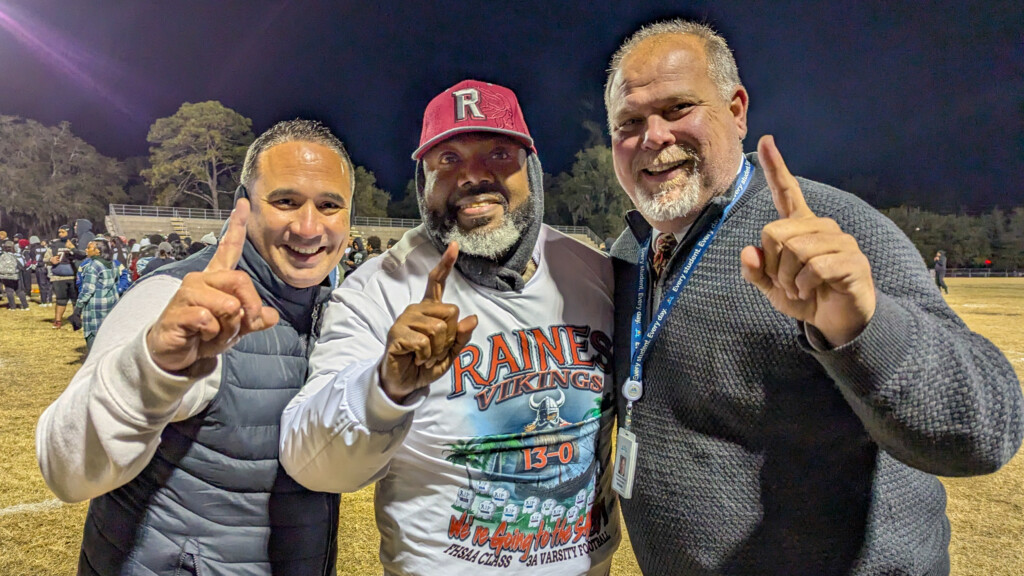
Q: What would you say are your personal goals for this job for this upcoming academic year? And, how do you expect to be able to achieve them?
A: First and foremost, I want to keep the “A.” It’s like winning the Super Bowl.
If the Super Bowl ever gets won across the river, the first thing they’re going to ask the head coach is: “How are you going to do it again next year?”
That’s already been asked of me. How did you do it? I’ve already talked a little bit about that: People business, instructional leadership, progress monitoring and collective accountability. I think for me, the big buckets don’t change. The big buckets are student achievement, safe work and learning environments and ethical and professional behavior.
We’ve had some issues, and we’re working on changing our climate and culture surrounding those areas. Increasing our enrollment and keeping those students who choose to come back to us, student attendance and budget — those big buckets don’t change.
When the budget is healthy, student achievement is right, kids feel safe about coming to school and our educators and other professionals behave with ethical conduct — and we hold each other collectively accountable — we’re going to continue to be an “A” rated school system. We’re going to continue to make sure our graduation rate continues to climb and maintains in the high 90%. We’re going to continue to move the needle for all of our students in terms of reading, math and what people used to call reading, writing and arithmetic.
